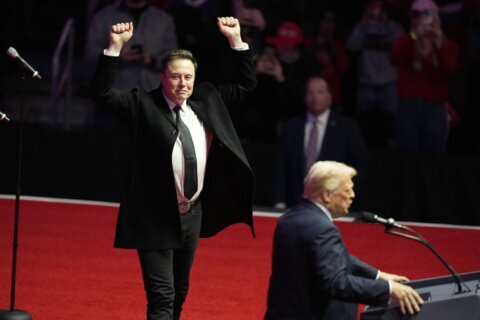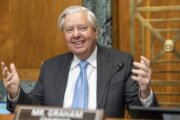Last year, 15 million U.S. consumers were victims of identity theft, according to the 2022 Identity Fraud Study from Javelin Strategy & Research. Criminals used personal information from these individuals that amounted to $24 billion in losses.
And this type of traditional identity theft is only half the problem. In addition, identity theft fraud scams in which criminals contact consumers directly to manipulate them into making transactions or giving up personal information affected 27 million people in 2021. Losses in these fraud cases total $28 billion.
No one wants to be a victim of identity theft, but it can be hard to avoid given how much personal information is stored by various companies and organizations. Learn what it means when someone steals your identity, how to check if someone is using your Social Security number and what to do if your identity is stolen.
What Happens When Someone Steals Your Identity?
Not all fraud rises to the level of identity theft, and by itself, a security breach doesn’t constitute a stolen identity. Rather, identity theft happens when someone uses your personal information to open new financial accounts, file tax returns or even make fraudulent medical claims. Not only is it a crime that can cost you money, but it could require significant time and effort to resolve.
“It tends to create a bit of a mess to clean up,” says David Salisbury, director of the Center for Cybersecurity and Data Intelligence at the University of Dayton.
How to Check to See if Someone Is Using Your Social Security Number
Although there is no foolproof way to check for identity theft, there are several strategies you can use.
“There are some telltale signs,” says David White, managing director and global head of data breach notification for Kroll Cyber Risk, which provides managed security services. People may receive emails or letters about new accounts or transactions they don’t recognize. “The problem is that a lot of us put it down to spam and ignore it.”
One way to check whether an email is legitimate is to look at the return address, White suggests. Spam emails often come from seemingly random addresses. If a message looks legitimate, contact the bank or company directly — rather than clicking on any links in the message — to confirm.
There are also a number of credit monitoring services which will scan the internet for signs of identity theft. These will review credit reports for new accounts and watch the dark web — where thieves trade information — for your personal data. Some paid programs, such as LifeLock and Zander, include identity theft insurance as well. Free monitoring may be available through credit scoring agencies as well as programs like CreditWise.
[See: Best Identity Theft Protection Companies.]
What to Do If Your Identity Is Stolen
If you do find you’re a victim of identity theft, here are 10 steps to minimize the damage.
1. File a claim with your identity theft insurance.
2. Notify companies of your stolen identity.
3. File a report with the Federal Trade Commission.
4. Contact your local police department.
5. Place a fraud alert on your credit reports.
7. Sign up for a credit monitoring service.
8. Tighten security on your accounts.
9. Review your credit reports for mystery accounts.
10. Scan credit card and bank statements for unauthorized charges.
1. File a Claim with Your Identity Theft Insurance
If you have an identity theft protection plan, your provider should be able to guide you through many of the following steps. Companies such as LifeLock and Sontiq sell identity theft protection plans, but even if you haven’t purchased coverage, you may have it through an insurer or employer.
Some employers offer identity theft resolution services as a job benefit and some insurers may roll it into their products. For instance, Chubb offers complimentary identity theft resolution services to its policyholders.
2. Notify Companies of Your Stolen Identity
Don’t wait to notify any company where fraudulent transactions or accounts have occurred. Call them immediately to alert them to the problem.
In cases of account takeovers, your credit card number might be compromised but thieves may not have access to your personal information. “It may be as simple as getting your bank to shut (that account) down,” says Lori Gross, financial and investment advisor with Outlook Financial Center in Troy, Ohio.
However, if someone is opening accounts in your name, impersonating you or using your Social Security number, you may want to proactively contact other companies and agencies. For example, you should notify the IRS if your Social Security number was used to file an income tax return; this can be done by submitting a Form 14039 Identity Theft Affidavit.
Likewise, if someone is impersonating you, alert your health insurance company in case they attempt to obtain medical care under your name or policy number.
[READ:How to Protect Yourself From Medical Identity Theft]
3. File a Report with the Federal Trade Commission
The FTC compiles information about identity theft cases. It doesn’t have the ability to pursue criminal charges, but its information may be used by law enforcement agencies such as the FBI to track down perpetrators.
To file a report with the FTC, visit www.identitytheft.gov. As part of the reporting process, you’ll receive a recovery plan and even prefilled letters and forms that can be used to file police reports and dispute fraudulent charges.
“It can be a bit of a challenge (to dispute newly opened accounts) because it’s hard for you to demonstrate you didn’t create those,” Salisbury says. However, having forms from the FTC may help.
Keep in mind that identity theft is defined as impersonating another person or using their information for financial gain. A stolen credit card number or security breach does not have to be reported to the FTC.
4. Contact Your Local Police Department
The next step is to file a report with your local police department and ask for a copy of it for your personal records.
This creates a paper trail that could be useful in the future. For instance, if someone uses your information to commit a crime, having documentation of identity theft could make resolving the matter easier.
Although the police may not be able to do anything if your identity was stolen by criminals online and overseas, your report could help them track down someone who is stealing information locally.
5. Place a Fraud Alert on Your Credit Reports
Next, follow up with the three major credit bureaus — Experian, Equifax and TransUnion — and request a fraud alert be placed on your account. The fraud alert stays on your credit report for a year, and it notifies any institution that pulls your credit report to the fact your identity may be compromised.
“Just because you had a problem and it was fixed doesn’t mean the problem goes away,” White says. Your personal information could — and probably will — continue to circulate among scammers, and it may only be a matter of time before someone else tries to open a fraudulent account in your name.
The fraud alert notifies a creditor to take a closer look at the person applying to make sure it’s you. You only have to request a fraud alert from one of the credit bureaus, and that company should notify the other two firms. Requesting a fraud alert is free.
6. Freeze Your Credit
For an added layer of protection, White says you can initiate a credit freeze. This will completely cut off access to your credit report and means the credit bureaus won’t share it with anyone who requests it.
Credit freezes can also be a smart way to protect children from identity theft. If a child’s Social Security number is compromised, “you might not know about that for years,” White says. However, a credit freeze eliminates the possibility of someone opening accounts with their number.
You’ll need to contact each bureau individually to request they freeze your credit. The process is free, and you can lift the freeze at any time.
[READ: Back-to-School Tips for Avoiding Child Identity Theft.]
7. Sign Up for a Credit Monitoring Service
If your information was accessed in a data breach, you may be offered complimentary credit monitoring. These services watch credit reports for suspicious activity and send alerts whenever a new account is opened.
If you aren’t offered free credit monitoring, you can sign up for a reputable service yourself. Companies like LifeLock and IdentityForce charge a monthly fee, while other companies like Credit Karma and CreditWise from CapitalOne offer free services.
8. Tighten Security on Your Accounts
Now is the time to review passwords, and using a password manager, such as LastPass or Dashlane, is an easy way to ensure all your accounts have strong passwords. Whenever offered, enable two-factor authentication, which will require both a password and a code delivered via email, text or phone for access to an account.
“People have a bad habit of replicating their credentials on different sites,” Salisbury says. Using unique passwords can diminish the damage should a criminal gain access to one of your accounts.
Other ways to avoid future instances of identity theft include shredding documents with personal information, not carrying your Social Security number in your wallet and not clicking on links in emails from suspicious or unknown senders. Delete any personal information such as addresses and phone numbers from public profiles on social media and other sites.
9. Review Your Credit Reports for Mystery Accounts
Whether you’re a victim of credit card fraud or a stolen identity, you need to watch for accounts you didn’t open.
“If you’re looking at your credit report on a regular basis, you’re going to see if accounts have been opened,” Gross says.
By law, you’re entitled to at least one free credit report from each agency each year. However, during the COVID-19 pandemic, people can request a free credit report weekly from Experian, Equifax and TransUnion. While plenty of websites and creditors promise free credit reports, the official site to request them is AnnualCreditReport.com.
10. Scan Credit Card and Bank Statements for Other Unauthorized Charges
In addition to your credit reports, pull up your other accounts and scan old statements for other charges you don’t recognize. Don’t forget to review dormant or infrequently used accounts as well. If you find unknown charges, call the financial institution to alert them of the problem and request the account be locked or closed.
Identity theft victims should talk to their financial institutions to determine how best to avoid further losses. In most cases, that will involve closing and reopening accounts, even ones that haven’t been compromised. It can be a tedious process, but a necessary one to avoid a thief from gaining future control of your money.
“Long gone is the prince of Nigeria who wants to send you $10 million,” White says.
Today’s scammers are more sophisticated, and that means consumers must adapt as well. Guard your personal information closely and if you do find yourself a victim of identity theft, use the steps above to minimize the damage.
More from U.S. News
What to Do When You Lose Your Wallet
10 Common Scams That Target Seniors and How to Avoid Them
6 Scams That Target Your Bank Account
10 Things to Do if Your Identity Is Stolen originally appeared on usnews.com
Update 07/19/22: This story was published at an earlier date and has been updated with new information.













